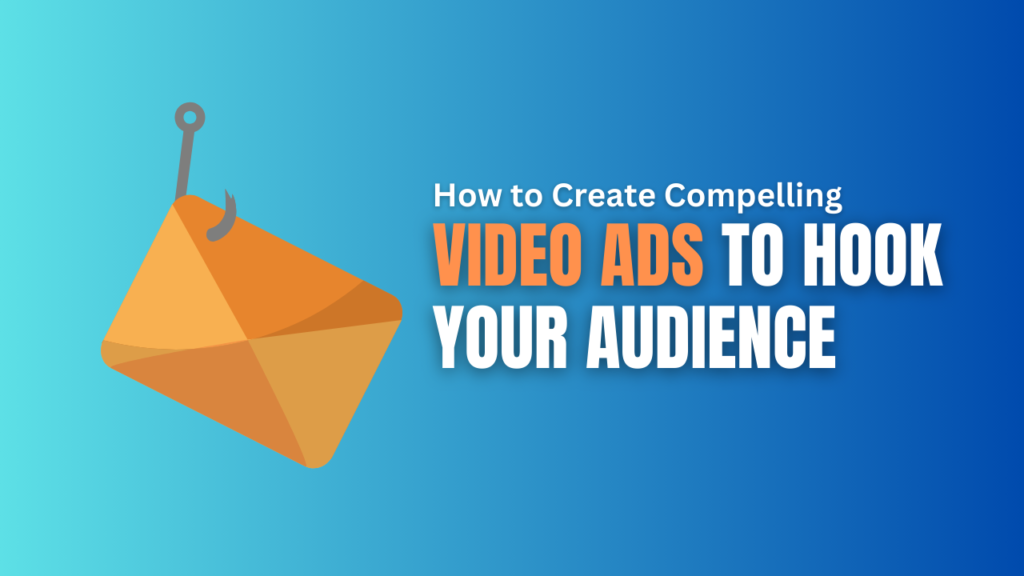Did you know that when you scroll through your social media feed, you’re likely to click on ads about 1.21% of the time? That might not sound like much, but it adds up!
In fact, a whopping 77% of small businesses are using social media to chat with their customers and show off what they’ve got. And get this – 76% of people have actually bought something after seeing a post from their favorite brand on social media!
So, next time you’re browsing through your feed, keep an eye out for those eye-catching ads – they might just lead you to your next favorite purchase!
But wait…have you ever wondered why you stop that endless scrolling and click such ads? Visuals and the way those ads are designed is the primary factor that hits you psychologically.
By the end of this guide, you’ll not just be able to create stunning social media ads that get clicks but also boost the conversion rate of your existing social media marketing campaign.
Role of Visuals Presentation in Social Media Ads
In the dynamic scenario of social media advertising, visuals play a primary role in capturing audience attention and driving engagement.
Research indicates that posts with compelling visuals garner significantly higher engagement rates compared to text-only content.
Moreover, the incorporation of visually appealing elements in advertisements correlates positively with click-through rates (CTRs), thereby increasing the likelihood of conversions.
Types of Visuals: Images, Videos, Carousels, Gifs, Etc.
Various types of visuals can be leveraged to enhance the effectiveness of social media ads. From static images to immersive videos, and interactive carousels to eye-catching gifs, each format offers unique opportunities to captivate audiences and convey brand messages effectively.
In the context of India’s burgeoning social commerce scene, where growth is projected to surge at a compound annual rate of 55-60% between FY 2020-2025, the strategic utilization of diverse visual formats becomes even more crucial for brands seeking to capitalize on this burgeoning market.
Social Media Platforms And Their Visual Requirements
As ad spending in the Social Media Advertising market is anticipated to reach US$1.28bn in 2023, it’s imperative for advertisers to understand the visual requirements and nuances of different social media platforms.
Each platform exaggerates distinct demographics, user behaviors, and content formats, necessitating customized visual strategies for optimal performance. From the image-centric allure of Instagram to the video-centric dynamics of TikTok, advertisers must adapt their visual content to resonate with the preferences of each platform’s audience while aligning with the projected growth trajectories of social commerce in India.
How to Define Your Visual Strategy for Social Media Ads?
To define laser-target visual strategy for your social media ads campaign, here is 3 steps to consider –
Identify Your Target Audience And Their Preferences
Understanding your target audience is paramount in crafting an effective visual strategy. With color being able to increase brand awareness and recognition by up to 80%, and a staggering 93% of consumers making purchasing decisions based on visuals alone. Additionally, it’s crucial to explore into depth the preferences and behaviors of your audience.
By conducting thorough research and analysis, including demographic profiling and psychographic segmentation, marketers can uncover insights into the types of visuals that resonate most with their target audience.
Whether it’s vibrant, eye-catching colors or minimalist designs, aligning visual elements with audience preferences can significantly enhance engagement and drive conversions.
Align Visuals With Brand Identity And Messaging
Consistency is key when it comes to visual branding. As colors play a vital role in brand recognition, it’s essential to ensure that visual elements align harmoniously with your brand’s identity and messaging.
By leveraging the power of color psychology and design principles, marketers can evoke desired emotions and associations, reinforcing brand perception and fostering deeper connections with consumers.
Whether it’s through the use of a distinctive color palette or the integration of brand logos and imagery, maintaining visual coherence across all touchpoints strengthens brand recall and distinguishes your brand in the competitive landscape.
Setting Clear Objectives For Your Visual Content
Establishing clear ads campaign objectives is essential for guiding your visual content strategy and measuring its effectiveness.
With the ability of visuals to influence purchasing decisions, setting specific goals, such as brand awareness or lead generation, provides a roadmap for creating impactful visual assets.
Whether it’s crafting visually compelling ads to increase brand visibility or developing engaging multimedia content to drive customer acquisition, aligning visual content with strategic objectives ensures that every visual element serves a purpose in advancing your marketing goals.
By defining key performance indicators (KPIs) and regularly evaluating the success of visual campaigns, marketers can refine their approach and optimize results over time.
Tips for Creating Engaging Social Media Ads for Maximum Impact
In the space where attention span on social media is dropping like never before due to fast-forward content like TikTok and YouTube Shorts, hooking your target audience to look at your ads has become super hard.
Here are 4 tips for creating engaging social media ads that gets maximum conversions:
Choosing High-Quality Images And Videos:
Incorporating high-quality visuals is paramount for capturing audience attention and maximizing advertising effectiveness.
A recent study by consumer acquisition revealed that pictures alone account for between 74 and 90 percent of an advertisement’s effectiveness.
Therefore, prioritizing resolution and clarity ensures that visuals are crisp and captivating, enhancing overall viewer engagement.
Professional photography or stock imagery with complementary color can elevate the visual appeal of advertisements, providing a polished and professional aesthetic.
On average, there was a 44% preference for warm-colored advertisements. Moreover, ads with color are viewed 42% more than their black and white counterparts, emphasizing the importance of vibrant and attention-grabbing visuals aligned with color psychology principles.
Incorporating Eye-Catching Design Elements
Color plays a crucial role in shaping viewer perception and eliciting emotional responses. Leveraging warm or cool colors strategically can influence audience preferences and attitudes towards advertisements.
With warm-colored ads preferred by 44% of viewers and cool-colored ads by 34%, selecting visually appealing hues becomes imperative for enhancing engagement and memorability.
In addition to color, contrast, typography, and branding elements contribute to the visual appeal and effectiveness of advertisements.
Incorporating contrast ensures that key elements stand out and grab attention, while thoughtful typography enhances readability and reinforces brand identity.
By integrating consistent branding elements, marketers can maintain brand coherence across various platforms and communication channels, fostering brand recognition and recall.
Crafting Compelling Storytelling Visuals
Compelling storytelling visuals have the power to resonate with audiences on an emotional level, driving deeper engagement and connection with the brand.
Incorporating narrative-driven visuals that evoke emotion or curiosity can captivate viewers’ attention and inspire action, as highlighted by the consumer acquisition study’s findings on the effectiveness of pictures in advertisements.
Furthermore, user-generated content (UGC) adds authenticity and credibility to visual campaigns, as consumers are more likely to trust recommendations from their peers.
Encouraging user participation through contests, hashtags, or reviews can generate a steady stream of engaging visuals, leveraging the influence of UGC to enhance brand perception and drive conversions.
Ensuring Mobile Optimization For Visual Content
Given that mobile ads have a higher click-through rate (CTR) than PC ads, optimizing visual content for mobile devices is essential for maximizing campaign effectiveness.
Mobile marketing campaigns that are targeted through customer segmentation register 50% higher CTR, underscoring the importance of tailoring visuals to the mobile user experience.
Designing visuals that are responsive to different screen sizes and orientations ensures a seamless viewing experience, ultimately driving higher engagement and conversion rates.
Prior to launch, testing visuals on mobile devices is critical for ensuring readability and clarity, particularly on smaller screens. By simulating real-world viewing conditions and assessing factors such as image resolution and text legibility, marketers can identify and address any potential issues that may impact campaign performance.
A/B testing different visual variations and monitoring key metrics such as engagement rates and conversion rates allows for data-driven optimization and refinement, maximizing the impact of visual content on mobile platforms.
Guide to Adapt Visuals for Different Social Media Platforms
Here are 4 pillars of adapting visuals for different social media platform ads –
Aspect Ratios, Image Sizes, And Video Lengths For Each Platform
Effective utilization of visuals on social media necessitates an understanding of platform-specific best practices.
For instance, Facebook ad images should ideally be at least 1080 x 1080 pixels to ensure optimal display quality and engagement.
On the other hand, platforms like Instagram or TikTok require resolution to be a minimum of 540*960px, 640*640px, or 960*540px to cater to their vertical or square formats.
Moreover, consideration of video lengths is crucial, with shorter videos often performing better on platforms like Instagram and TikTok, while longer-form content may be suitable for YouTube or Facebook.
Decide in Carousel Ads Vs. Single Image Vs. Video Ads
When choosing between carousel ads and single image/video ads, marketers must weigh the benefits of each format against their campaign objectives.
Static ads, such as single image or video ads, are typically cheaper to produce and may be effective for conveying concise messages or promotions.
However, the carousel ad format, with its ability to showcase multiple products or features in a single ad, is particularly well-suited for e-commerce campaigns.
Given that video ads on average garner 6x more engagement than image ads, leveraging video content can amplify the impact of social media advertising across various platforms.
Researching Platform Demographics And User Behavior
Understanding the demographics and user behavior of each social media platform is essential for tailoring visuals to resonate with the target audience.
For instance, while Facebook may cater to a slightly older demographic with a preference for informative content, platforms like Instagram and TikTok attract younger, visually-oriented audiences seeking authentic and engaging experiences.
By conducting thorough research into platform demographics, marketers can align visual content with the preferences and behaviors of their target audience, maximizing engagement and conversion opportunities.
Adapting Visual Styles To Match Platform Trends And Aesthetics
Social media platforms are dynamic ecosystems characterized by evolving trends and aesthetics.
Marketers must stay attuned to platform-specific trends, such as popular hashtags, filters, or content formats, to ensure that their visuals remain relevant and resonant with users.
Whether it’s embracing the ephemeral nature of Stories on Instagram or leveraging TikTok’s creative editing tools, adapting visual styles to match platform trends enhances content visibility and virality.
By staying agile and responsive to emerging trends, marketers can maintain a competitive edge and effectively engage with their target audience across diverse social media platforms.
Conclusion:
Throughout this guide, we’ve gone in depth to key strategies and insights for crafting compelling social media ads that truly resonate with your audience. From understanding your target demographic to leveraging engaging visuals and compelling copy, we’ve covered the essentials.
Now is the time to take these insights and put them into action. By applying the tips and strategies we’ve discussed, you have the opportunity to create stunning social media ads that not only capture attention but also drive meaningful conversions. Remember, the goal is not just to be seen, but to inspire action.
Lastly, it’s crucial to emphasize the dynamic nature of social media. Trends shift, algorithms evolve, and audience preferences change. Thus, ongoing experimentation and adaptation are key according to Ads Guardian Team. Continuously analyze the performance of your ads, gather insights, and adjust your visual content strategy accordingly. Keep experimenting, keep adapting, and watch your social media presence thrive.



